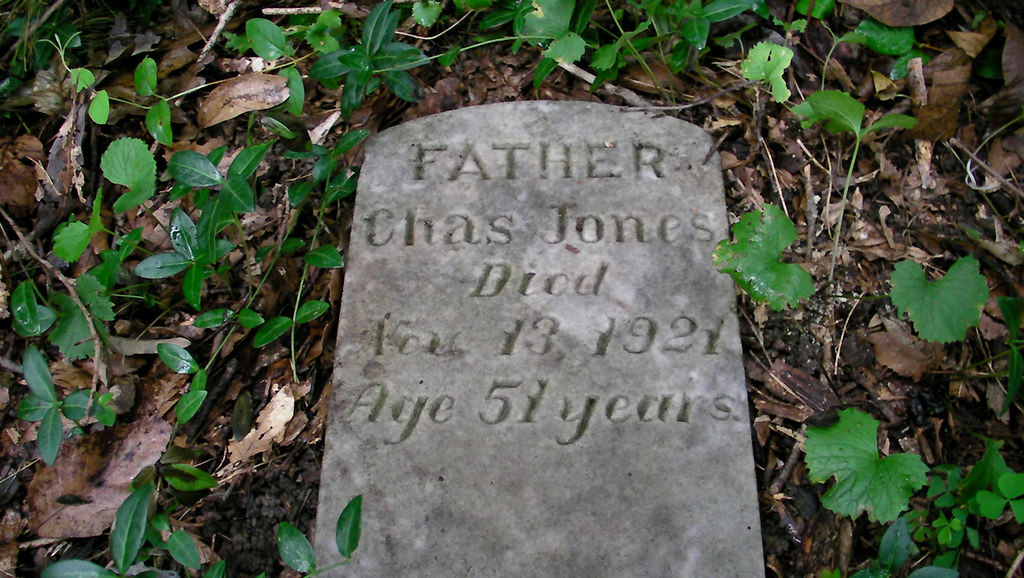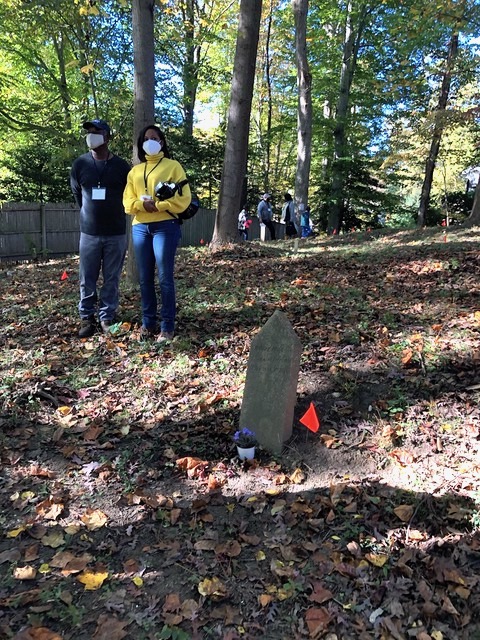Stop Destroying African American Cemeteries

In the late 19th century, a group of once-enslaved, free African Americans in Cabin John, Maryland, succeeded in creating a space they could call their own: a community called Gibson Grove. They purchased land, built homes and a church, started a school, and created a cemetery, all to protect themselves in life and death from discrimination.
But now the Maryland State Highway Administration (SHA) is attempting to claim eminent domain of a portion of this private property—a move that threatens to destroy this sacred space—in the name of highway expansion.
This threat is part of a broad problem that has been playing out across the United States since the 1940s, when many city planners argued that placing interstates through urban areas would be a good way to rid cities of “slums” and deteriorated areas. Over the decades, many African American communities have been impacted in the name of development, including Hamtramck, Michigan; Miami, Florida; Camden, New Jersey; Sugar Hill, California; and Gibson Grove, too, where I now serve as the archaeologist for a group fighting to save the cemetery from further degradation.
Ridgewood Cemetery in Tampa, Florida, discovered in 2019, was built over with a school in 1960. Today we are seeing other direct attacks on African American cemeteries, such as the Boyd Carter Memorial Cemetery in West Virginia, which is being targeted to make way for a gas pipeline, and the Buena Vista Cemetery in Louisiana, which was found during construction of a plastics factory.
While the removal of homes, schools, parks, and places of worship for development and construction can be horrible for any community, the destruction of African American cemeteries poses a particular ethical concern. There is a long history of African Americans being oppressed and deprived of equal rights by the government. These construction projects are a continuation of that violence.
Legal protections can be afforded to burial sites. Currently, some Native American burials are protected by the 1990 Native American Graves Protection and Repatriation Act, for example, which requires federal agencies to repatriate or transfer human remains and other cultural items to the appropriate community. Apart from general historic preservation regulations, no similar federal law or act mandates broad protections of African American graveyards—a bill to begin addressing this issue was recently passed by the Senate and is awaiting a House vote. Many cemeteries have suffered from years of official neglect and government policies that ignored or devalued their significance to U.S. history.
This systemic destruction of a vital part of African American heritage needs to stop.
The Gibson Grove community was built through self-reliance, education, faith, and mutual support at a time when African Americans in the region had few, if any, options for schooling, could not obtain health insurance, and could not be buried in the same cemeteries as their European American counterparts.
Central to the community was a benevolent (nonreligious) society called Morningstar Tabernacle No. 88, established in 1887 as the first documented lodge of the Ancient United Order of Sons and Daughters, Sisters and Brothers of Moses in Montgomery County, Maryland. Its objective was to provide for the care and education of Gibson Grove’s orphans, the care of its sick and destitute, and the burial of its dead. It had a lodge for its meetings, the Moses Hall, and a cemetery. Moses Hall burned down in the 1960s as a result of arson, but the structure’s foundations still stand.
“This has been an ongoing injustice, and they are dividing my family with these acts,” said Austin White, whose father rests in the cemetery.
In 1962, the state of Maryland purchased portions of property from a few landowners to construct the Capital Beltway (I-495). The highway bisected Gibson Grove, leaving the African Methodist Episcopal Zion Church separated from the larger community. A fence was erected to prevent people from wandering onto the highway—it runs right along the edge of the cemetery, which possibly leaves some graves on the other side, separating loved ones from one another. In 1963, Morningstar Tabernacle No. 88’s membership dwindled, and it ceased to operate as a society, though the Gibson Grove community remained a cohesive group.
I was introduced to the Gibson Grove community in 2008, when I conducted my archaeological dissertation research on the historic Zion church building. The church (under a new congregation, called First Agape A.M.E. Zion Church) had a fire in 2004, and the community needed an archaeologist to conduct an archaeological survey to ensure that nothing of historical significance would be destroyed in the process of rebuilding. In the course of my work with the church, I learned about the history of the larger Gibson Grove community and the role of Morningstar Tabernacle No. 88. My research became an extensive study on the community as a whole, forming the basis for later preservation efforts.
In 2017, the SHA plan was announced to expand the Capital Beltway (both I-495 and I-270). The plan shows that the development threatens a good portion of the cemetery.
All this led to the formation of the Friends of Moses Hall group in 2020, established with the purpose of saving the Morningstar Tabernacle No. 88’s hall foundations and cemetery from destruction. The group is made up of descendants of the original Gibson Grove community, along with other community members, preservationists, researchers, and an archaeologist (me). Together, we have reestablished Morningstar Tabernacle No. 88 as a functioning entity; I act as one of the trustees for the cemetery.
Today SHA continues to push forward with the expansion project; the Friends of Moses Hall continues to fight back. The administration has told the Friends of Moses Hall that it would like to come to an agreement on “mitigating” the impact on the cemetery; the government seems to hold conflicting views: that the history and families at Gibson Grove are important and that the highway construction must go ahead.
Austin White is a community member who lives adjacent to the cemetery, where his father is buried. “This has been an ongoing injustice, and they are dividing my family with these acts,” he told me. “They have already caused damage, and now they are causing more damage.”
There are broader moves afoot to help preserve African American heritage in cemeteries.
In February 2019, a bill was introduced by representatives from North Carolina and Virginia to establish an African American Burial Grounds Network. The bill passed unanimously in the Senate. This bill provides official federal recognition for such cemeteries, with funding opportunities for archaeological and other work, and a new database for collecting information on the sites, which would be useful information for descendant communities, states, and developers alike. Currently, the legislation is headed to the House for a vote.
Now is the time to push this bill through and do more to save African American cemeteries. Over the past year, a surge in the Black Lives Matter movement increased public awareness about the plight and struggles of African American communities, and there has been a surge, too, in appreciation for the value of historic African American cemeteries. In 2019, over 50 organizations signed a letter of support for the network bill.
All Americans should rally behind protecting these sacred spaces of memory and honor. No one wants to receive a letter from government officials saying they are going to dig up your mother or father to expand a highway. The African American community deserves more than that.

































